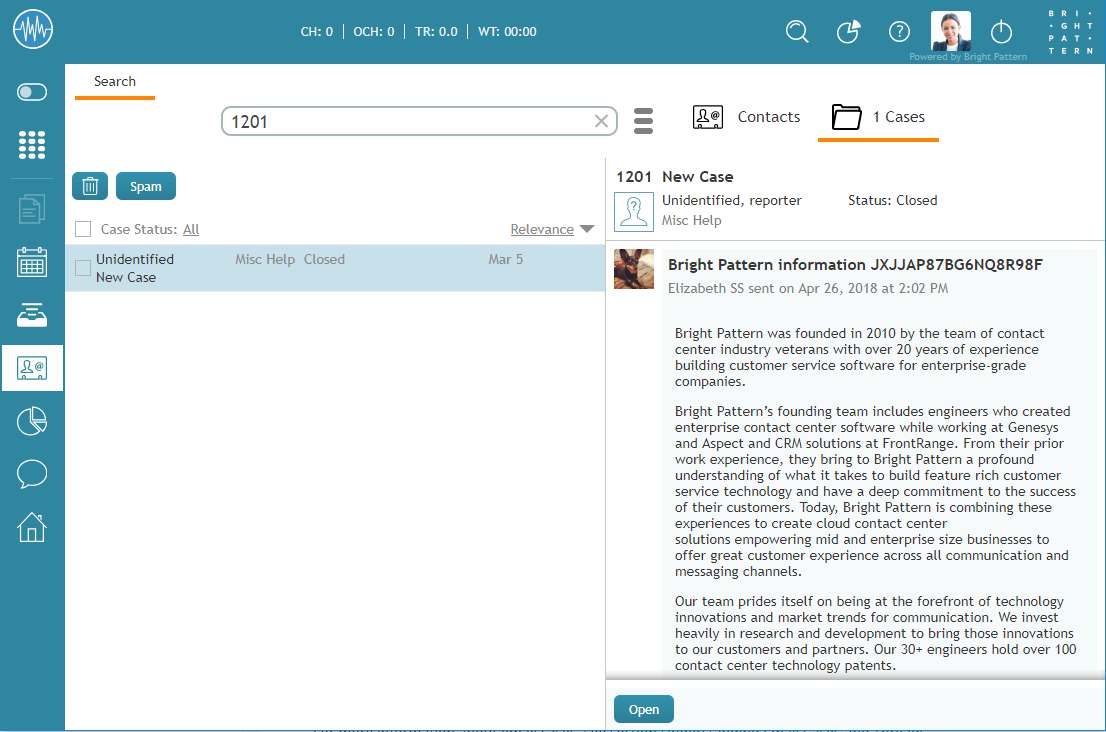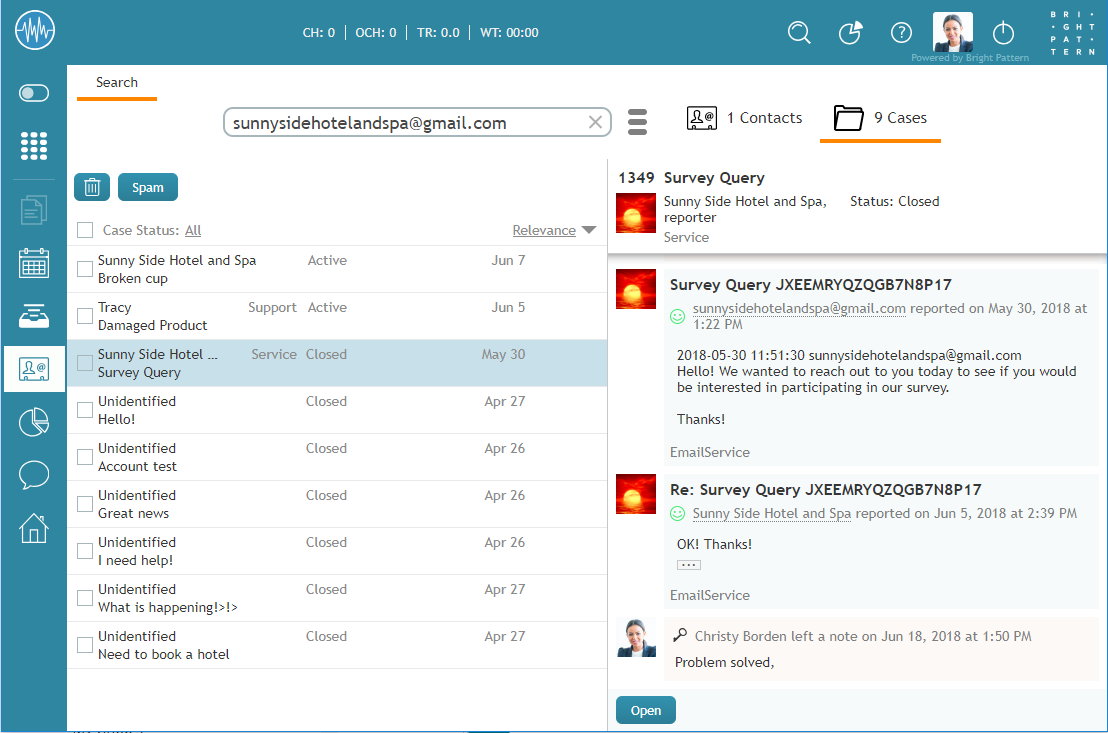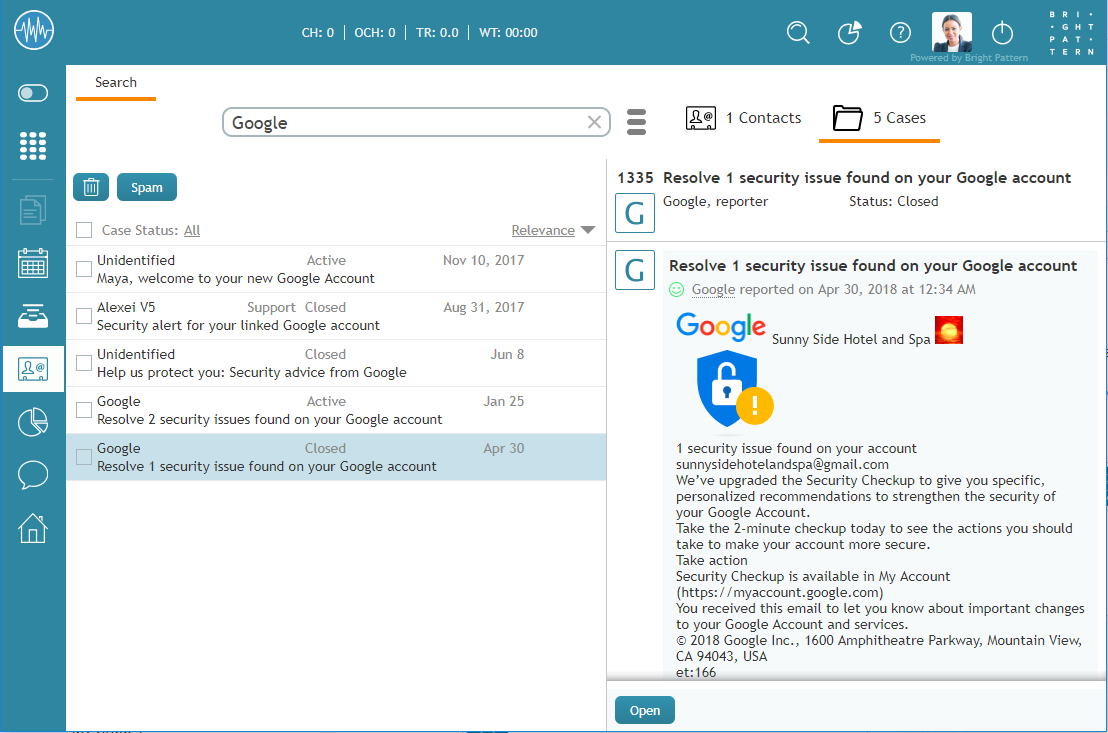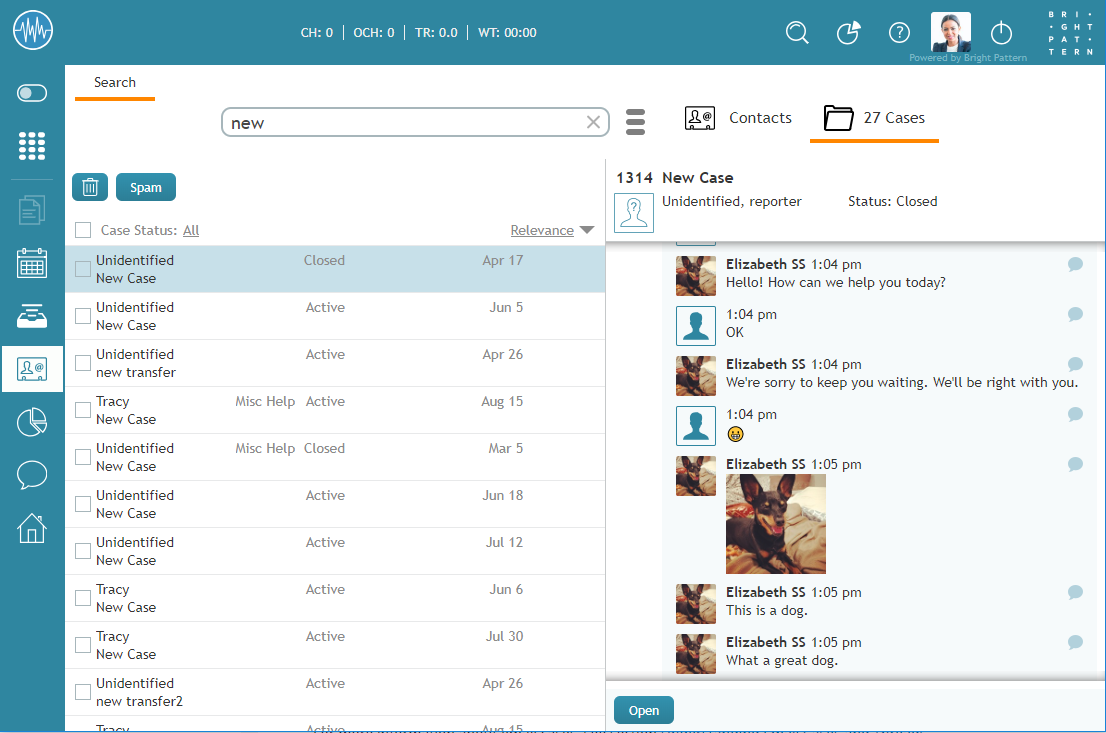電子メールケースの検索
対応するリクエストの件数が増えるにつれて、ケースの件数も増えます。 文字列の検索を使うことによって、エージェントデスクトップからケースの検索が簡単にできます(全ての言語に対応可)。
Note the privilege to search cases and contacts must be enabled by your contact center administrator.
Search String
To search your email cases in Agent Desktop, navigate to the Contacts center, select the Cases tab, and type in any character(s) (i.e., letters and/or numbers) into the search term field. In addition, you can enter email addresses, names, date of birth, case numbers, contacts, and email subject strings.
In the search results, the first 200 cases/contacts are displayed, with the newest entries displayed first.
Case
When a new email request arrives, the system creates a case for it automatically and assigns a number to this case that is unique within your contact center (e.g., 1185). This number is typically communicated to the customer and can be used by both the customer and yourself to refer to the given request in all future communications. If you know the case number, you can enter it in the search string input field.
Company
Company names may be searched for either whole or in part; the search recognizes individual words. To search for a company by name, enter company: XXX. Note: XXX represents the name of the company.
Date of Birth
You may search for the date of birth of a contact in your local date format. For example, in the US, the local date format is DD/MM/YYYY. To search for a specific date of birth, enter dob: DD/MM/YYYY.
If you are familiar with a case or customer's email address, you may search for it. In the example shown, entering the complete email address in the search string input field returns all matches in the system.
Name
In the example shown, entering a partial or full name in the search string input field returns several results with data for the case number, the date the case/email was created, and the email's subject line.
Subject
Email subject lines may be searched for either whole or in part; the search recognizes individual words.
For more information about email cases, see section Understanding Email Cases and Threads.





